Turbidity, Total Suspended Solids & Water Clarity
What are Total Suspended Solids?

Total suspended solids (TSS) are particles that are larger than 2 microns found in the water column. Anything smaller than 2 microns (average filter size) is considered a dissolved solid. Most suspended solids are made up of inorganic materials, though bacteria and algae can also contribute to the total solids concentration 3.
These solids include anything drifting or floating in the water, from sediment, silt,and sand to plankton and algae 1. Organic particles from decomposing materials can also contribute to the TSS concentration. As algae, plants and animals decay, the decomposition process allows small organic particles to break away and enter the water column as suspended solids 17. Even chemical precipitates are considered a form of suspended solids 20. Total suspended solids are a significant factor in observing water clarity 3. The more solids present in the water, the less clear the water will be.
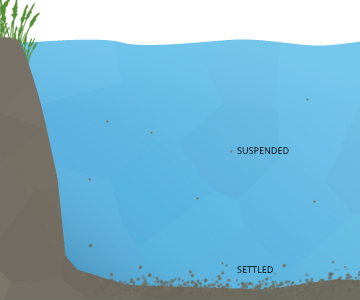
Some suspended solids can settle out into sediment at the bottom of a body of water over a period of time 3. Heavier particles, such as gravel and sand, often settle out when they enter an area of low or no water flow. Although this settling improves water clarity, the increased silt can smother benthic organisms and eggs 1. The remaining particles that do not settle out are called colloidal or nonsettleable solids 4. These suspended solids are either too small or too light to settle to the bottom.
Settleable solids are also known as bedded sediments, or bedload 37. These sediments can vary from larger sand and gravel to fine silt and clay, depending on the flow rate of water. Sometimes these sediments can move downstream even without rejoining the suspended solids concentration. When settleable solids are moved along the bottom of a body of water by a strong flow, it is called bedload transport 7.
What is Turbidity?
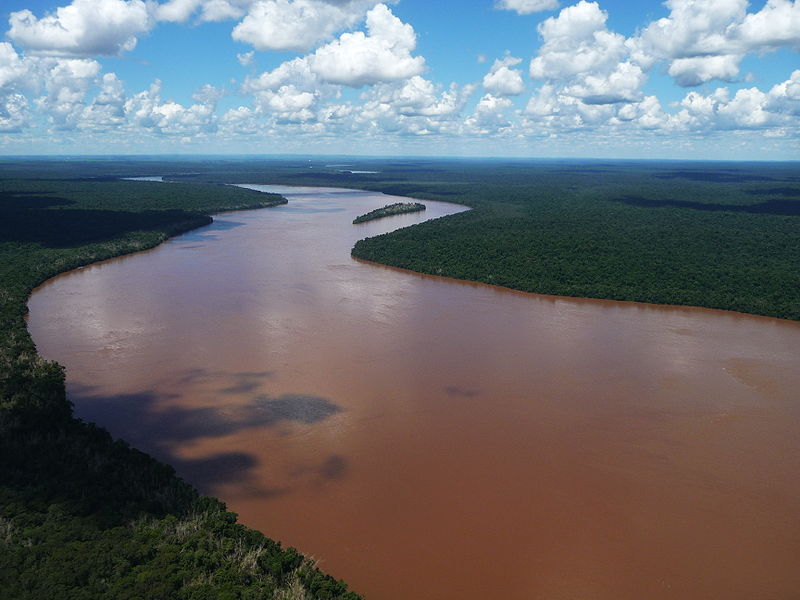
Turbidity is an optical determination of water clarity 1. Turbid water will appear cloudy, murky, or otherwise colored, affecting the physical look of the water. Suspended solids and dissolved colored material reduce water clarity by creating an opaque, hazy or muddy appearance. Turbidity measurements are often used as an indicator of water quality based on clarity and estimated total suspended solids in water.
The turbidity of water is based on the amount of light scattered by particles in the water column 2. The more particles that are present, the more light that will be scattered. As such, turbidity and total suspended solids are related. However, turbidity is not a direct measurement of the total suspended materials in water. Instead, as a measure of relative clarity, turbidity is often used to indicate changes in the total suspended solids concentration in water without providing an exact measurement of solids 1.
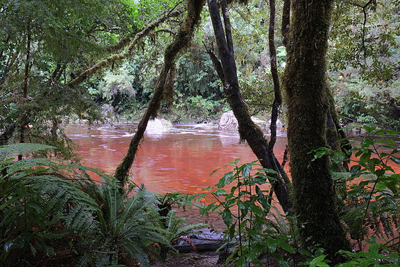
Turbidity can come from suspended sediment such as silt or clay, inorganic materials, or organic matter such as algae, plankton and decaying material. In addition to these suspended solids, turbidity can also include colored dissolved organic matter (CDOM), fluorescent dissolved organic matter (FDOM) and other dyes 14. CDOM is also known as humic stain. Humic stain refers to the tea color produced from decaying plants and leaves underwater due to the release of tannins and other molecules.
This discoloration is often found in bogs, wetlands or other water bodies with high amounts of decaying vegetation in the water. CDOM can cause water to appear red or brown, depending on the type of plants or leaves present. These dissolved substances may be too small to be counted in a suspended solids concentration, but they are still part of a turbidity measurement as they affect water clarity.
What is Water Clarity?

Water clarity is a physical characteristic defined by how clear or transparent water is. Clarity is determined by the depth that sunlight penetrates in water 9. The further sunlight can reach, the higher the water clarity. The depth sunlight reaches is also known as the photic zone. The clearer the water, the deeper the photic zone and the greater the potential for photosynthetic production 10. The photic zone (and thus water clarity) has a maximum depth of 200 m based on the light absorption properties of water.
Water clarity is directly related to turbidity, as turbidity is a measure of water clarity. The transparency of water is affected by the amount of sunlight available, suspended particles in the water column and dissolved solids such as colored dissolved organic material (CDOM) present in the water.
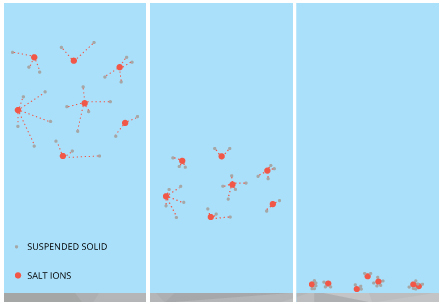
Salinity also affects water clarity 10. This is due to the effect of salt on the aggregation and settling velocity of suspended particles. In other words, salt ions collect suspended particles and bind them together, increasing their weights and thus their likelihood of settling to the bottom. Due to this mechanism, oceans and estuaries tend to have a higher clarity (and lower average turbidity) than lakes and rivers 10. These marine environments also have a higher rate of sedimentation as solids are pulled out of the water column to the seafloor.
Turbidity vs Suspended Solids – What is the difference?
Turbidity and total suspended solids refer to particles present in the water column. Turbidity and water clarity are both visual properties of water based on light scattering and attenuation. All three parameters are related to particles in the water column, whether directly or indirectly.
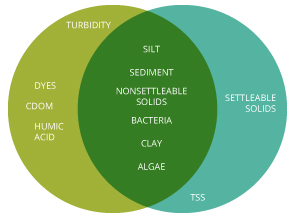
Turbidity is determined by the amount of light scattered off of these particles 6. While this measurement can then be used to estimate the total dissolved solids concentration, it will not be exact. Turbidity does not include any settled solids or bedload (sediment that “rolls” along the riverbed) 7. In addition, turbidity measurements may be affected by colored dissolved organic matter 5. While this dissolved matter is not included in TSS measurements, it can cause artificially low turbidity readings as it absorbs light instead of scattering it 8.
Total suspended solids, on the other hand, are a total quantity measurement of solid material per volume of water 6. This means that TSS is a specific measurement of all suspended solids, organic and inorganic, by mass. TSS includes settleable solids, and is the direct measurement of the total solids present in a water body. As such, TSS can be used to calculate sedimentation rates, while turbidity cannot 1,6.
Water clarity is strictly relative to sunlight penetration. While this is usually determined by the amount of suspended solids in water, it can also be affected by CDOM and other dissolved solids 10. Water clarity is the most subjective measurement of the these three parameters, as it is usually determined by human observation 5.
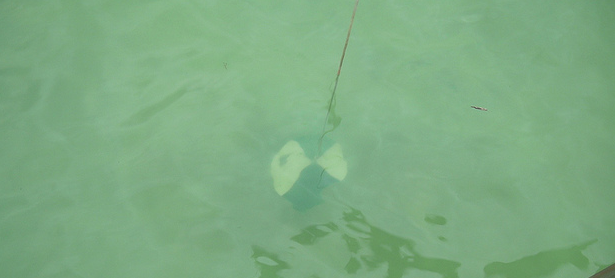
Why are Turbidity and Total Suspended Solids Important?
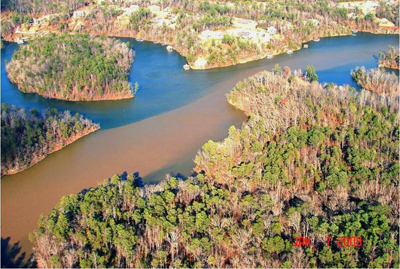
Turbidity and TSS are the most visible indicators of water quality. These suspended particles can come from soil erosion, runoff, discharges, stirred bottom sediments or algal blooms 1. While it is possible for some streams to have naturally high levels of suspended solids, clear water is usually considered an indicator of healthy water 9,14. A sudden increase in turbidity in a previously clear body of water is a cause for concern. Excessive suspended sediment can impair water quality for aquatic and human life, impede navigation and increase flooding risks 7.
Water Chemistry
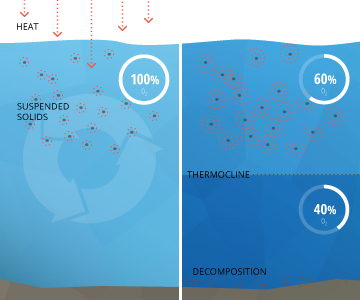
In terms of water quality, high levels of total suspended solids will increase water temperatures and decrease dissolved oxygen (DO) levels 1. This is because suspended particles absorb more heat from solar radiation than water molecules will. This heat is then transferred to the surrounding water by conduction. Warmer water cannot hold as much dissolved oxygen as colder water, so DO levels will drop 13. In addition, the increased surface temperature can cause stratification, or layering, of a body of water 3. When water stratifies, the upper and lower layers do not mix. As decomposition and respiration often occur in the the lower layers, they can become too hypoxic (low dissolved oxygen levels) for organisms to survive.
Photosynthesis Production
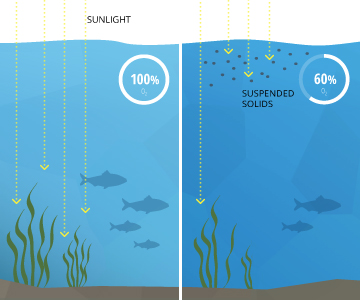
Turbidity can also inhibit photosynthesis by blocking sunlight. Halted or reduced photosynthesis means a decrease in plant survival and decreased dissolved oxygen output 9. The higher the turbidity levels, the less light that can reach the lower levels of water. This reduces plant productivity at the bottom of an ocean, lake or river 15. Without the needed sunlight, seaweed and bay grasses below the water’s surface will not be able to continue photosynthesis and may die 16.
Underwater vegetation die-off has two main effects. First, as photosynthetic processes decrease, less dissolved oxygen is produced, thus further reducing DO levels in a body of water 13. The subsequent decomposition of the organic material can drop dissolved oxygen levels even lower. Second, seaweed and underwater plants are necessary food sources for many aquatic organisms. As they die off, the amount of vegetation available for other aquatic life to feed on is reduced. This can cause population declines up the food chain 21.
Erosion
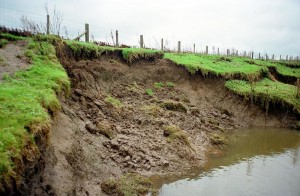
An increase in turbidity can also indicate increased erosion of stream banks, which may have a long-term effect on a body of water 3. Erosion reduces habitat quality for fish and other organisms. In terms of water clarity, reduced light penetration due to suspended sediment can obscure aquatic organisms’ vision, reducing their ability to find food 17. These suspended particles can also clog fish gills and affect growth rates 13.
Erosion can contribute to shallower, filled-in lakes and streams as some of the suspended particles settle out 15. These settleable solids can suffocate benthic organisms and fish eggs 1. In addition, the sediment may smother insect larvae and other fish food sources 13. When this occurs in rivers and channels, the increased sediment loads can reduce navigability for ships and boats 7. In cases of excessive sedimentation, settleable solids from erosion and runoff can even halt freight passage completely.
Contamination
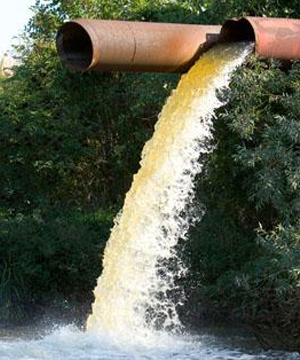
Pollutants such as dissolved metals and pathogens can attach to suspended particles and enter the water 2. This is why an increase in turbidity can often indicate potential pollution, not just a decrease in water quality. Contaminants include bacteria, protozoa, nutrients (e.g. nitrates and phosphorus), pesticides, mercury, lead and other metals 17. Several of these pollutants, especially heavy metals, can be detrimental and often toxic to aquatic life 26. The addition of nutrients can encourage the development of harmful algal blooms.
When the suspended solids concentration is due to organic materials, particularly sewage effluent and decaying organic matter, the presence of bacteria, protozoa and viruses are more likely. These organic suspended solids are also more likely to decrease dissolved oxygen levels as they are decomposed 19.
Human Concerns
These microbes and heavy metals can impact not only aquatic organisms, but drinking water as well 2. Organic suspended solids, such as decomposing matter or sewage effluent often naturally include high levels of microorganisms such as protozoa, bacteria and viruses 19. Such pathogens contribute to waterborne diseases like cryptosporidiosis, cholera and giardiasis 25. Turbid water, whether due to organic or inorganic material, cannot be easily disinfected, as the suspended particles will “hide” these microorganisms 20.
In a lake or river, turbidity may also reduce visibility of underwater structures such as logs or large boulders, negatively affecting a water body’s recreational use 19. In industrial processes, turbidity can contribute to clogged tanks and pipes 20. The particles can also scour machines, potentially damaging them.
What Contributes to Suspended Solids?
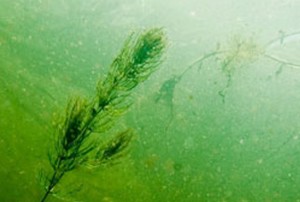
Suspended solids in a body of water are often due to natural causes. These natural solids include organic materials such as algae, and inorganic materials such as silt and sediment. Some algae, such as phytoplankton, are regular occurrences, especially in the ocean. Inorganic materials can easily become suspended due to runoff, erosion and resuspension from seasonal water flow. However, when suspended solids exceed expected concentrations, they can negatively impact a body of water. Excess over background amounts are often attributed to human influence, whether directly or indirectly 37. Pollution may contribute to either organic or inorganic suspended solids, depending on the source. Algae, sediment and pollution will affect water quality in different ways depending on the quantity present.
Algae
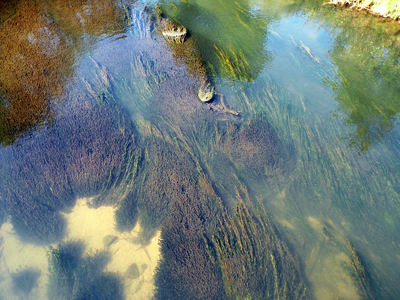
Algae are plantlike, photosynthesizing organisms that can thrive in both freshwater and saltwater 11. These organisms come in different sizes, from microscopic phytoplankton to giant sea kelp forests 12. Both the phytoplankton and seaweed forms of algae will consume nutrients in the water and can increase dissolved oxygen levels through photosynthesis. When they die, however, the organic material is decomposed by microbes in the water column. This decomposition process can decrease dissolved oxygen levels to below normal levels 42.
Seaweed and kelp are found rooted to the seafloor, but phytoplankton and other micro-algae can be found at the water’s surface or throughout the water column 11. In particular, cyanobacteria, or blue-green algae, have floating mechanisms that keep them at the surface, blocking sunlight from the water 19. These phytoplankton contribute to the total suspended solids concentration, while rooted vegetation or attached streambed-mat forms of algae do not. However, if these rooted algae become detached (usually when the algae dies or if it is forcefully removed), then their mass becomes part of the suspended solids measurement 6.
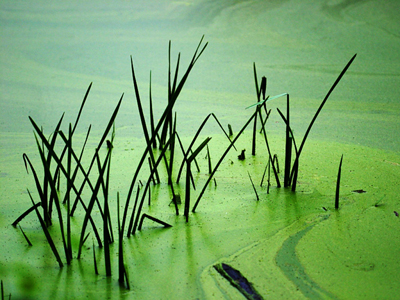
The most obvious examples of algae’s contribution to turbidity are found in algal blooms 11. An algal bloom occurs when an excessive amount of algae grows quickly across the surface of a body of water. These blooms usually occur due to an influx of nutrients such as nitrogen and phosphorus due to agricultural runoff or decomposition, though warmer water temperatures and longer daylight hours also contribute to their growth 15. Floating algal blooms can block sunlight, release toxins, and deplete oxygen levels in a body of water 11.
While some algae growth occurs naturally (often seasonally), excessive growth is often attributed nutrient pollution.Turbidity monitoring can be used to determine if an increase in suspended solids is natural or due to agricultural runoff 6.
Sediment: Runoff and Erosion
Sediment is comprised of any solid material that can be transported by water, wind or ice 23. It is usually defined as the soil particles (including silt, clay and sand) that are deposited on the bottom of a body of water 21. These particles are usually classified by size from smallest (clay is less than 0.00195 mm in diameter) to largest (coarse sand can be up to 1.5 mm) 19. Silt falls in between, ranging from 0.0049 to 0.047 mm.

In areas of high flow, even rocks can be considered sediment as they are deposited in water 22. However, not all sediment is suspended. The amount and size of suspended sediment is dependent on water flow 17. The faster the flow, the larger the particle that can be suspended. Higher flow rates can also support a higher concentration of suspended solids. Particles larger than 0.5 mm usually settle out as water flow decreases 19. Most of the suspended sediment that remains (colloidal solids) consists of fine sand, silt, and clay 19.
The majority of suspended sediment present in water bodies comes from runoff and erosion 6. If the land surrounding a body of water has only sparse vegetation, the topsoil can easily be washed away into the water 3. Highly vegetated areas will absorb most of the runoff, keeping the body of water clearer.
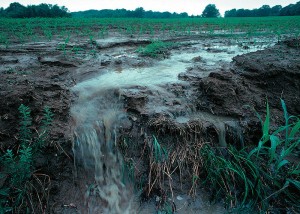
In addition to collecting suspended particles from runoff, rivers and streams can slowly erode soft riverbanks due to the constant water flow. An increase in river volume and flow (due to rain or other causes) can increase the rate of erosion 18. On the other side of the spectrum, bedrock-based streams may not have much sediment available to suspend. The local geology will determine natural turbidity levels based on normal flow rates, soil type, land structure and vegetation 6. If the surrounding land is altered by agriculture, construction or other soil-disturbing use, it can accelerate erosion and runoff, increasing turbidity 3.
Pollution

Any potentially harmful substance that is added to the environment by humans, whether directly or indirectly, is considered pollution 29. This can vary from bacteria riding along on a sewage plant discharge, to coal and iron ore particulates that float in from a mining zone. If these pollutants are larger than 2 microns, they will contribute to the total suspended solids concentration.
Some of the more common suspended solid pollutants are pathogens (bacteria, protozoa, helminths), microbeads (from exfoliating soaps), wastewater effluent, sewage, airborne particulates, and road particles (e.g. asphalt and tire flecks). Colored wastewater discharge and dyes are pollutants that will affect turbidity, but not suspended solids.
Nutrients like nitrate and phosphorus are often considered pollutants, but as they are a dissolved substance, they do not contribute directly to the suspended solids concentration 30. Instead, they are an indirect contributor as they fuel algal blooms, which do affect TSS and turbidity.
These dissolved nutrients, along with dissolved metals, chemicals, and refractory organics, will impact the quality of a body of water 29. Nitrate and phosphorus can cause eutrophication (excessive plant and algae growth) which in turn causes low dissolved oxygen levels due to plant respiration and microbial decomposition. Refractory organics are often carcinogenic, while heavy metals and other chemicals can be toxic to aquatic organisms 29.
While these contaminants can enter the water as a dissolved substance, many of them ride along on grains of soil or other larger pieces of pollution (e.g. paint flecks or asphalt particles)29. When this is the case, they can be picked up in suspended sediment samples. Chemical dyes will affect turbidity readings as the colored molecules will affect light absorption, but they will not be included in a suspended solids measurement.
Factors that Influence Turbidity
Suspended solids can be comprised of organic and inorganic materials such as sediment, algae, and other contaminants. However, there are specific factors that can affect turbidity levels in a body of water. These are water flow, point source pollution, land use and resuspension.
Water Flow and Weather
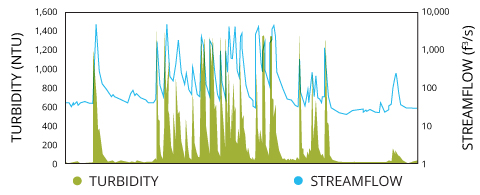
Turbidity and water flow are causally related 18. High flow rates keep particles suspended instead of letting them settle to the bottom. Thus in rivers and other naturally-occurring high flow environments, turbidity can be a constant presence 2. In these areas, it is important to monitor for changes in turbidity at the same point each time to ensure that the data is not affected by a lower or higher water velocity 18.
Weather, particularly heavy rainfall, also affects water flow, which in turn affects turbidity. Rainfall can increase stream volume and thus stream flow, which can resuspend settled sediments and erode riverbanks 1.
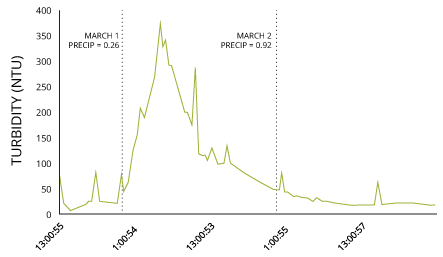
Rain can also directly increase the level of total suspended solids through runoff. As water flows over a surface, it can pick up particles and deposit them in a body of water 2. Runoff can also wash away topsoil, and contribute to riverbank erosion 3. If the flow rate increases enough, it can resuspend bottom sediments, further raising TSS concentrations 2.
In areas of dry, loose soil or earth-disturbed sites (e.g. mining or construction areas), wind can blow dust, sediment and other particles into the water 29. The addition of new particles will increase the suspended solids concentration. However, wind will generally not increase turbidity levels in the water alone. In wave-dominated estuaries and coastal areas, turbidity is naturally low 41. In comparison, tidal areas, where the water flow is strong enough to resuspended bottom sediments, have high natural turbidity levels. Wind-driven turbidity increases only occur in shallow zones where waves are tall enough to resuspend sediment 40. Tides, wind, and rain can influence turbidity levels due to their effect on water flow and introduced sediment loads 9.
Tributaries can also alter turbidity. When a freshwater stream or river enters a saltwater estuary, the change in water flow can cause turbidity levels to increase. This mixing area is often called a turbidity maximum zone 16. These zones tend to have little aquatic vegetation due to the high suspended solids concentrations. Estuaries are often subject to tidal influences as well, which can pull in sand and sediment from the shoreline and resuspended bottom sediments 16.
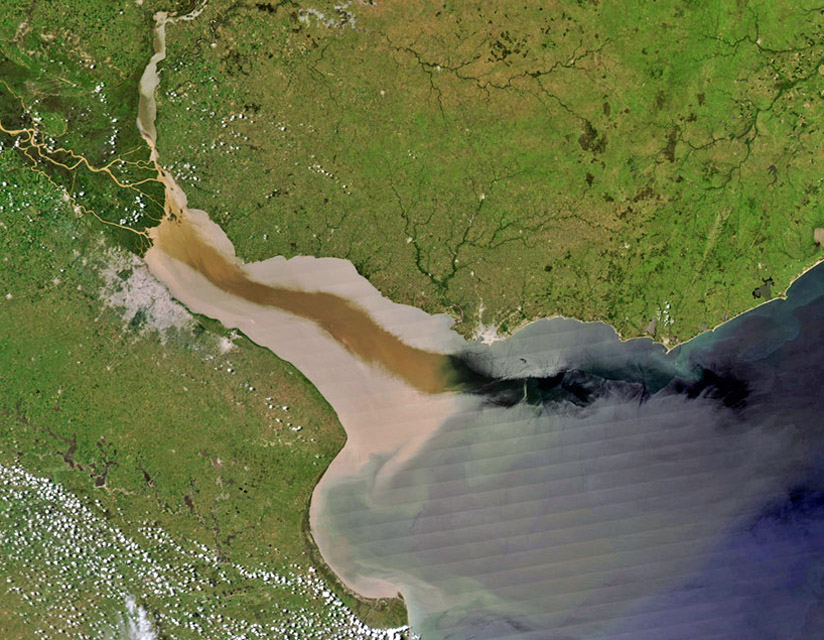
Point-Source Pollution
If pollution can be tracked to a single, identifiable source, it is considered point-source pollution 34. Point-source pollution can increase turbidity through the addition of suspended solids and colored effluent (wastewater) to a body of water. For water quality, common examples include discharge pipes from factories and wastewater treatment plants. In addition, farms can also fall under the category of point-source pollution 33. These sources can release harmful pathogens (bacteria) and chemicals into the water, in addition to suspended solids.
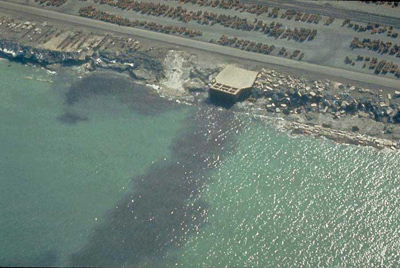
Many factories, wastewater treatment plants, and sewage treatment plants discharge effluent into local water bodies or sewer systems. Sometimes this water is treated or filtered before it is discharged, but sometimes it is not 33. The EPA has created several guidelines for effluent discharge, but they are all based on the technology used, and not the final impact on the local water body 32. While most wastewater treatment plants include a settling period in the treatment process, this does not affect colloidal (nonsettleable) solids 13. When this wastewater is discharged, these suspended solids may still be present unless treated with additional filters. In addition, colored effluent cannot be trapped by a filter. While dyes and colored dissolved organic material (CDOM) are not included in a suspended solids measurement, they will contribute to turbidity readings due to their effects on light absorption.
Farms that are identified as point sources often allow fertilizer and animal waste to enter local bodies of water. Most agricultural pollution is due to runoff, and not a specific discharge. While this runoff is not intentional, it can be detrimental to water quality as these pollutants are untreated 33. Animal wastes can increase pathogen concentrations in the water, while the fertilizer can contribute to eutrophication and excessive algal growth.
Land Use
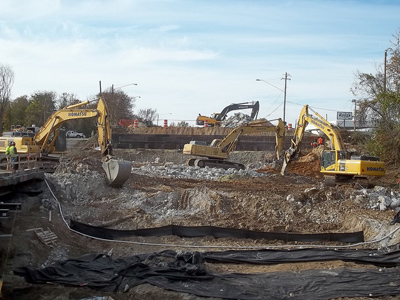
A major factor in increased turbidity and total suspended solids concentrations is due to land use. Construction, logging, mining and other disturbed sites have an increased level of exposed soil and decreased vegetation 17. Agricultural areas are also considered disturbed areas after they are tilled 18. Land development, whether it is agricultural or construction, disturbs and loosens soil, increasing the opportunities for runoff and erosion 15. The loosened soils caused by these sites can then be carried away by wind and rain to a nearby body of water.
This leads to an increase in runoff rates, causing erosion and increased turbidity in local streams and lakes 6. Settleable solids in the runoff can be deposited on the bottom of a lake, river or ocean, damaging benthic habitats 15. Erosion due to land use is considered a non-point source of turbidity. The use of silt fences and sedimentation basins at construction sites can prevent soils from reaching nearby water sources 13.
In addition to increasing turbidity levels through suspended sediment, agricultural runoff often includes nutrients as well. Due to the presence of these nutrients, this runoff can fuel the growth of algal blooms 9. These effects can be seen in local streams, lakes, and even estuaries like the Chesapeake Bay. Water quality can be affected anywhere that these nutrients and sediments are carried. No-till farming practices can reduce the potential for erosion and help maintain nearby water quality 13.
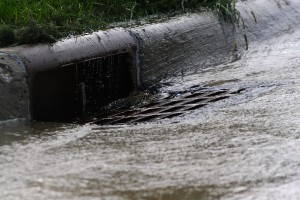
Sediment- and pollutant-filled runoff can also occur in urban areas. When it rains, soil, tire particles, debris and other solids can get washed into a water system 17. This often occurs at a high flow rate due to the amount of impervious surface areas (e.g. roads and parking lots). Water cannot penetrate these surfaces, so sediment cannot settle out 17. Instead, the stormwater runoff flows right over the pavement, carrying the suspended solids with it. Even in areas with storm drains, these drains usually lead directly to a local water source without filtration 21. To minimize the pollution and turbidity caused by urban runoff, stormwater retention ponds can be constructed 13. These basins allow suspended particles to settle before water drains downstream 28.
Resuspension
Even carp and other bottom-feeding fish can contribute to increased turbidity levels 17. As they remove vegetation, sediment can become resuspended in the water. Sediment at the bottom of a body of water can be stirred up by shifting water flow, bottom-feeding fish, and anthropogenic causes such as dredging. Dredging projects, which remove built-up sediment in navigation channels, are a major source of resuspended sediments in the surrounding water 3. Dredging can cause high turbidity levels as it disturbs large amounts of settled sediment in a relatively short period of time. These stirred-up particles are mostly silt and sand. When they resettle, they can alter habitats, smother fish eggs and suffocate bottom-dwelling organisms.
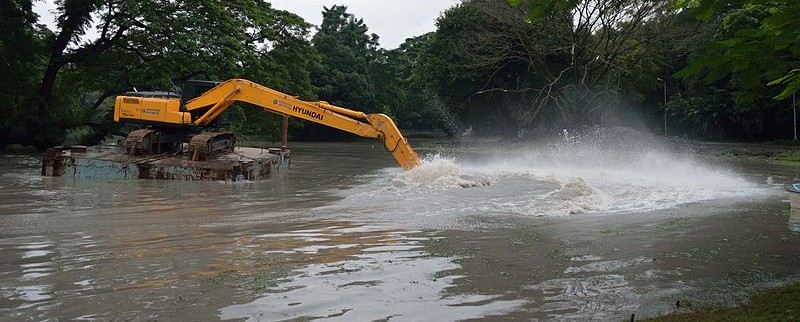
TSS and Turbidity Units
Total suspended solids, as a measurement of mass are reported in milligrams of solids per liter of water (mg/L) 18. Suspended sediment is also measured in mg/L 36. The most accurate method of determining TSS is by filtering and weighing a water sample 44. This is often time consuming and difficult to measure accurately due to the precision required and the potential for error due to the fiber filter 44.
Turbidity, on the other hand, is most often measured with a turbidity meter. Turbidity is reported in units called a Nephelometric Turbidity Unit (NTU), or a Jackson Turbidity Unit (JTU) 6. The JTU was the original turbidity unit based on the visibility of candlelight in a tube (Jackson Candle Turbidimeter) 43. However, this method is considered out of date and inaccurate in comparison to newer methods.
While some organizations consider the two units to be approximately equal, there are some specific differences 20. In particular, NTU is more precise and has a wider range (JTU cannot measure above 25 JTU/NTU) 43. In addition NTU is the standard unit of many broadband output (400-680 nm wavelength) turbidit meters. Nephelometric refers to the measurement technology used. This technology method requires the photodetector in the meter to be placed at a 90 degree angle from the illumination source 14. As light bounces off the suspended particles, the photodetector can measure the scattered light.
The USGS also suggests the use of the Formazin Nephelometric Unit (FNU) if a turbidity meter only has a monochrome/infrared output, as opposed to the white/broadband output 14. This applies to instruments that are in compliance with the European drinking-water protocol, including most submersible turbidity meters 34. Both NTU and FNU will show equal measurements when calibrating as they both use nephelometric technology, but may operate differently in the field due to the different light source 14. Turbidity meters that use FNU units are able to compensate for dissolved colored materials (such as humic stain), while NTU turbidity meters cannot 14.

Water clarity, when not measured in terms of turbidity, is measured by Secchi depth 1. This measurement is based on the depth that a black and white Secchi disc can be lowered into a body of water. At the point visibility is lost, the depth of the disc is recorded, and is known as the Secchi depth 16. High Secchi depths correspond with low turbidity levels, while low Secchi depths are associated with high levels of suspended solids. This method is generally only useful in oceans, lakes and deep, low-flow rivers. In marine environments, a larger solid white disc is often used, while some shallower lakes use a black disc and take a horizontal measurement 39.
Due to the effects of salt on suspended sediment, ocean clarity is often much higher than lake or river clarity. Most Secchi disc records reach around 65-80 m 39. Water clarity has a theoretical limit of 200 m, based on light penetration and calculations with distilled and ultrapure water 10. However, most Secchi discs are not large enough to be seen at that depth.
In shallower streams, a Secchi tube can be used 38. A Secchi tube is usually one meter long and is filled with collected water. A small Secchi disc is then lowered into the tube and read at the point of disappearance, just as it is in a larger body of water 38.
Turbidity Meters and Measurements
Regardless of whether readings are in NTU, FNU or other less common units, it is important to note that a turbidimeter’s optical design will affect turbidity readings 14. As turbidity is a measurement of light scatter, the placement and designs of the detectors with the meter can influence the readings. This simply means that raw data from two different turbidity meters cannot be directly compared without an established relationship between them 14. Turbidity readings can vary based on wavelengths emitted, light source instability, high particle density or due to the presence of colored dissolved or suspended material. The more detectors present in a turbidimeter, the less variability there will be in measurements 14.
Typical Levels
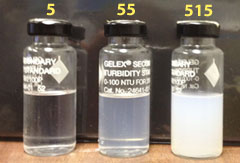
In most situations, a total suspended solids concentration below 20 mg/L appears clear, while levels over 40 mg/L may begin to appear cloudy 13. In comparison, a turbidity reading below 5 NTU appears clear, while a reading of 55 NTU will start to look cloudy and a reading over 500 NTU will appear completely opaque 2.
It is important to note that this is dependent on the size and nature of the suspended solids. Typical turbidity and TSS levels are difficult to quantify due to their natural variation by season, local geology, water flow and weather events. During a low-flow period, most rivers and lakes are fairly clear with a turbidity reading below 10 NTU. These readings can easily jump into the hundreds due to runoff during a rainstorm, snowmelt or a dredging project 1.

In general, marine environments have lower turbidity levels than freshwater sources 10. The salinity of the ocean or estuary will cause the the suspended solids to aggregate, or combine. As the aggregate weight increases, the solids begin to sink and will settle on the seafloor 10. This effect offers greater water clarity than is available in most lakes and rivers. The higher the salinity, the greater the effect 10. However, in tidal zones, a turbidity maximum may occur due to the constant resuspension of these settled solids 16. Freshwater sources may also carry out additional suspended particles into the delta.

As the concentrations of total suspended solids are difficult to measure and predict, most states do not have a set standard. Even the National Academy of Sciences only recommends that “TSS should not reduce light penetration by more than 10%” 3. Kentucky does not have a quantitative standard for acceptable levels of total suspended solids. Instead, they simply state that there should be no adverse affects to the body of water or its inhabitants 3. Michigan is another example of a state with only a “narrative standard” for total suspended solids and turbidity 13. There is no set level or concentration, only a recommendation against unnatural physical properties (e.g. turbidity, color, films, floating or suspended solids) in “injurious” quantities 13.
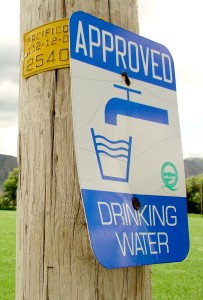
Instead, many countries and organizations have established recommended turbidity levels from a baseline of prior measurements. In the case of drinking water, recommended levels are based on several filtration and disinfection studies 31The Ireland EPA advises treatment plants to have turbidity levels below 0.2 NTU, with a mandatory maximum of 1 NTU for drinking water 31. According to the World Health Organization, water for human consumption should have turbidity levels below 1 NTU, though for some regions, up to 5 NTU is allowed if it can be proven to be disinfected 19,20. The American Water Works Association suggests that a level of 5 NTU or lower is acceptable for recreation purposes 19. As a state example, the North Carolina code allows up to 10 NTU for trout waters, 25 NTU for non-trout streams and as high as 50 NTU for non-trout lakes.
Other states have determined allowable fluctuations from an established baseline. The state of Washington does not have a standard for TSS, but it does for turbidity, depending on the body of water. In some streams, turbidity cannot increase by more than 5 NTU from the baseline. For others, turbidity may be allowed to fluctuate by up to 20% 6.
Consequences of Unusual Levels
In addition to to being a warning sign for pollution, suspended solids can harbor pathogens such as bacteria and protozoa 2. These microorganisms attach to the suspended particles, aiding in their transportation and hiding them from disinfectants 2. These pathogens can infect aquatic or human life if the sediment is not removed.
Algal Blooms
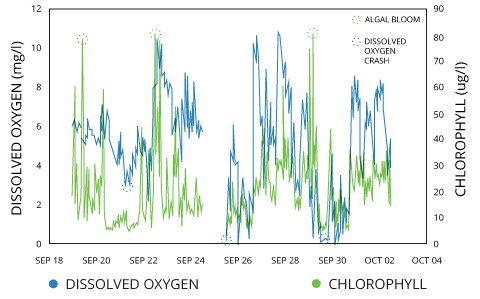
Algal blooms, while initially increasing dissolved oxygen levels, may create hypoxic conditions as they decompose 42. When an algal bloom appears, it blocks sunlight from reaching any submerged vegetation, killing those plants and decreasing the amount of dissolved oxygen produced. Then, when the bloom dies off, microbes consume more oxygen as they decompose the organic material. This causes dissolved oxygen levels to plummet even lower, creating hypoxic (low DO) or even anoxic (no DO) conditions.
Furthermore, some blooms produce toxins that are damaging to aquatic and human life 16. These harmful algal blooms include cyanobacteria, red tide (Karenia brevis) and ciguartera (gambierdiscus toxicus) 27.
Settleable Solids
Settleable solids can impair lakes and other water bodies. If sedimentation rates are high, they can alter and often destroy fish habitats and spawning beds 37. If eggs or benthic organisms are present, they can become buried by the sediment and die. Sediment deposition can reduce egg and embryo survival by reducing oxygen supply and crusting over the egg, preventing the embryo from escaping 37.
As sediment build-up increases, the shallower body of water means an increased risk of flooding and a decrease in navigability for boats and ships 24. Dredging projects attempt to remove excessive sediment deposits from navigation channels, but this can be just as damaging to the local fish habitats and spawning beds.
Turbidity
High turbidity levels can diminish visibility and often feeding behaviors, in addition to physically harming aquatic life. The suspended solids may disrupt the natural movements and migrations of aquatic populations 13. Fish that rely on sight and speed to catch their prey are especially affected by high turbidity levels. These fish often flee areas of high turbidity for new territories 37. For the fish that remain in the turbid environment, suspended sediment can begin to physically affect the fish. Fine sediment can clog fish gills and lower an organism’s resistance to disease and parasites 37. Some fish may consume suspended solids, causing illness and exposing the fish to potential toxins or pathogens on the sediment. If the consumed sediment does not kill the fish, it can alter the organism’s blood chemistry and impair its growth 37.
Turbidity will also affect submerged plant growth. Levels over 15 NTU are considered detrimental to bay grass growth in estuary zones 16. As turbidity increases, the amount of light available to submerged aquatic vegetation (SAV) decreases. Without enough light, photosynthesis will stop, and the SAV will no longer produce dissolved oxygen. In addition to reducing the dissolved oxygen concentration in the water, the plants will eventually die 40. As the aquatic vegetation dies off, the organisms that feed on it will also decline due to the reduced food sources available 13. If turbidity levels remain elevated, the effects can be seen up the food chain 37.
Even aquatic life that does not strongly depend on vegetation for survival will be affected by the low dissolved oxygen levels 40. If these fish and invertebrate cannot escape the anoxic area, they will die.
Cite This Work
Fondriest Environmental, Inc. “Turbidity, Total Suspended Solids and Water Clarity.” Fundamentals of Environmental Measurements. 13 Jun. 2014. Web. < https://www.fondriest.com/environmental-measurements/parameters/water-quality/turbidity-total-suspended-solids-water-clarity/ >.





